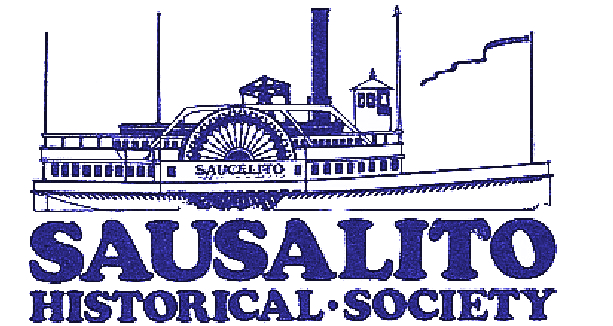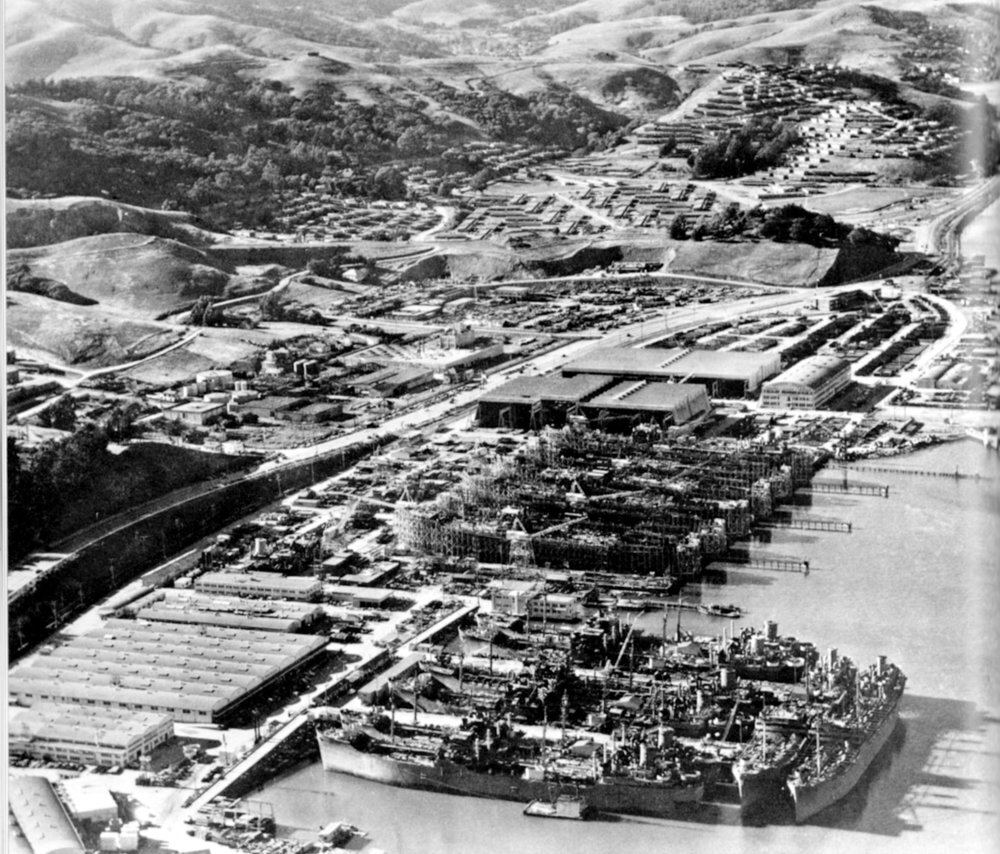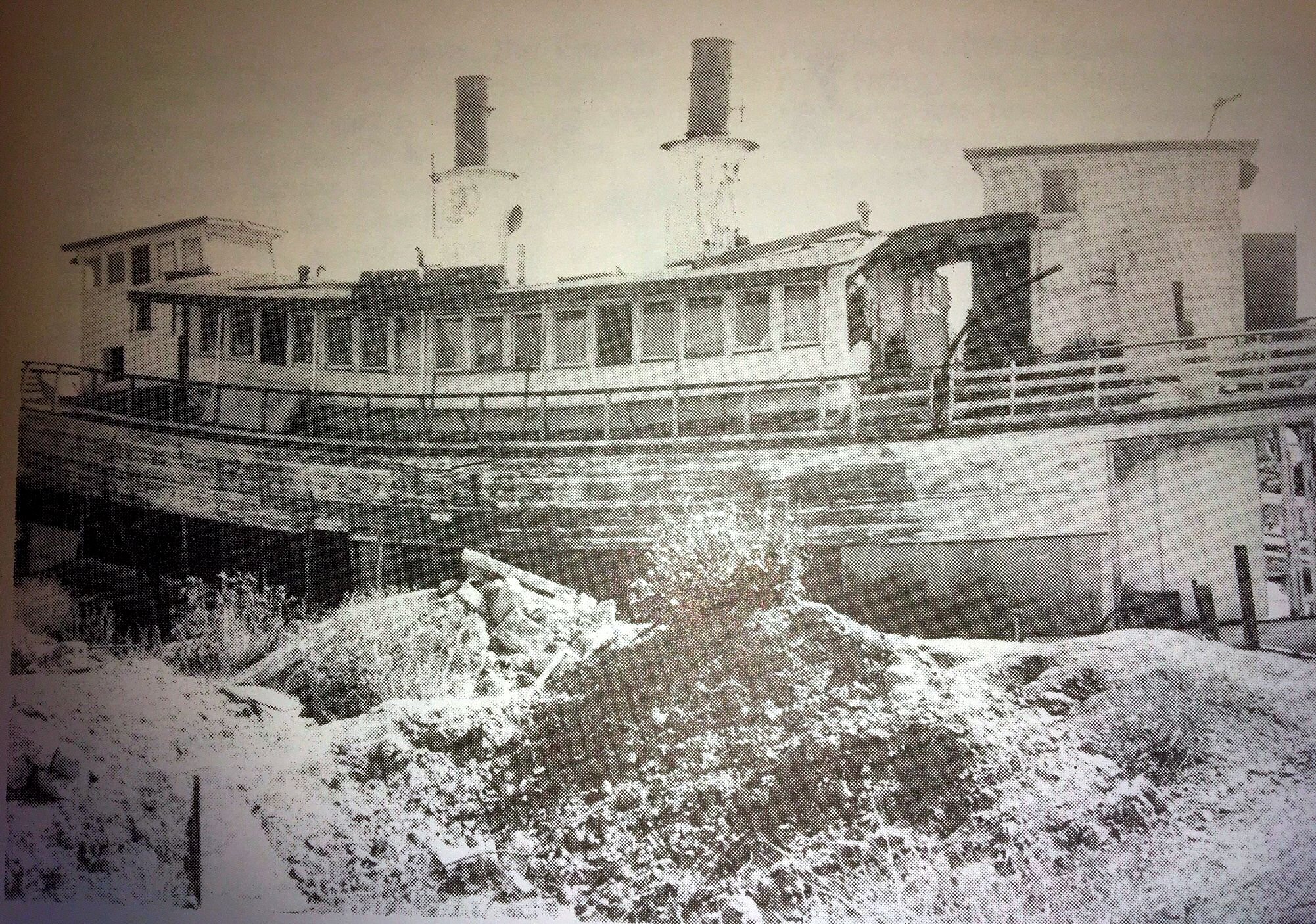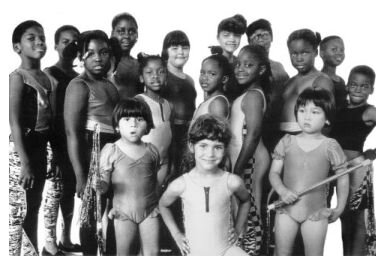Nora Sawyer, Sausalito Historical Society
When the keel for the Liberty Ship William A. Richardson was laid on June 27th, 1942, the United States had been at war for a little more than six months. Just three months before, residents of Sausalito’s Pine Point had been evicted, and their homes relocated or destroyed. The point itself was dynamited, the shoreline and tidal flats filled, and crews worked day and night to build the Marin Shipbuilding Division of W.A. Bechtel Company – Marinship, for short.
Between the laying of the William A. Richardson’s keel and the launch of its last ship, the Marinship saw three Memorial Days.
On Monday May 31st, 1943, the Marinship observed its first Memorial Day with the launch of the tanker Moscoma. “The entire ceremony was keyed to the day,” observed the Sausalito News, “with the birth of a new ship and the honoring of the nation’s hero dead jointly underlying the program.” Among the dignitaries in attendance was U.S. Navy Chaplain Lt. Howell M. Forgy, who gave the invocation “with a voice and delivery which made ‘Praise the Lord and Pass the Ammunition’ famous at Pearl Harbor.” Forgy had served as chaplain aboard the USS New Orleans, and during the attack had been overheard using phrase, which became widely quoted and was even turned into a popular song by Frank Loesser in 1942.
The next year, the shipyard marked Memorial Day with the dedication of the S. S. Mission Buenaventura, its thirtieth large tanker and forty-fifth ship launched from the shipyard. Though the ceremony took place two days before Memorial Day, its bow was painted with a wreath of red poppies, in remembrance of American servicemen and women who had died overseas.
On National Maritime Day on May 22 that year, shipyard workers gathered to hear from Clarence Smith, known as Smitty, “a man who helped build the ship that was sunk under him in the Indian Ocean.” The shipfitter leadman had helped build the Sebastian Cermeno, a Liberty Ship launched from Sausalito in March 1943. On June 27, 1943, he was serving aboard the merchant ship when it was struck by two torpedoes from a Nazi submarine. Smitty, aboard a lifeboat, barely escaped the vortex created when “the large vessel rose straight on her nose, until almost vertical, and then slipped quickly under the water.”
Three men went down with the ship, and two more died at sea. The rest escaped in five lifeboats. After twenty days at sea, the lifeboat carrying Smitty and 24 other survivors was picked up by a British Convoy, who “gave them tea and cigarettes, washed off the heavy oil which covered the survivors ever since the Cermeno went down, and gave them new clothing.”
“It was the greatest feeling of my life,” the Sausalito News quotes Smitty as telling the Marinship workers “to get into those clean clothes and know you were saved. We stayed aboard the small warship nine days. Now I am crazy about the British.”
After a medical discharge, Smitty returned to his job at the Marinship. Harry Faulkner another survivor who’d also helped build the Cermeno was re-deployed as a seaman. After Smitty finished his story, “workers stood in a minute of silent tribute to the five men who were lost in the sinking of the Ceremeno, and to the 5,500 seamen lost in line of duty since the war began.” When the war ended, the Sebastian Cermeno was the only ship built at the Marinship lost to enemy fire.
I couldn’t find newspaper coverage of the last Memorial Day observed at the wartime shipyard. Perhaps the yard was too hard at work – June 16 1945 saw the launch of the USS Huntington Hills, produced in a record-setting 33 days, with 28 days on the ways and 5 at the outfitting docks. This broke the prior record of 59 days, set by the Ellwood Hills (also built in the Marinship) that April.
By that final Memorial Day, the war’s end was in sight. Germany had surrendered to the Allied forces on May 9th, and Japan would formally surrender September 2nd. On September 8, 1945, the shipyard celebrated the launch of its last ship, the Mission San Francisco. All told, the Marinship launched 15 Liberty ships, 16 fleet oilers, and 62 tankers — a total of 93 ships in three and a half years.
As you walk or drive through the Marinship this week, you’ll see historical photographs featuring the Marinship and its workers. Sponsored by the Sausalito Working Waterfront Coalition, the Sausalito Lion’s Club, Sausalito Foundation, Marin Performing Stars, and the Historical Society, these posters look back at a proud chapter in the history of Sausalito’s waterfront, celebrate our continuing maritime heritage, and honor those who have died while serving in our country’s military. As you pass, take a moment to remember those who died, and also think of the bustling wartime shipyard, the workers who kept it going, and the ships that were built and launched from our shores.





















